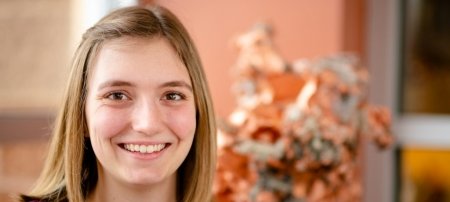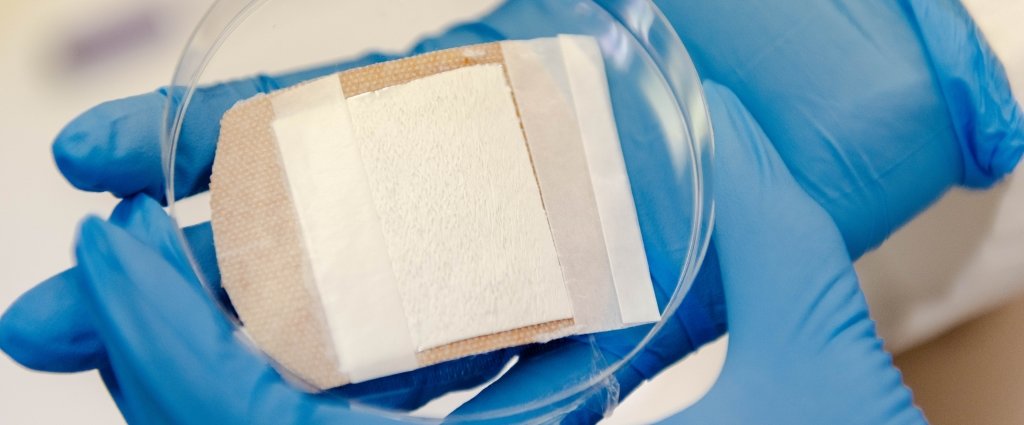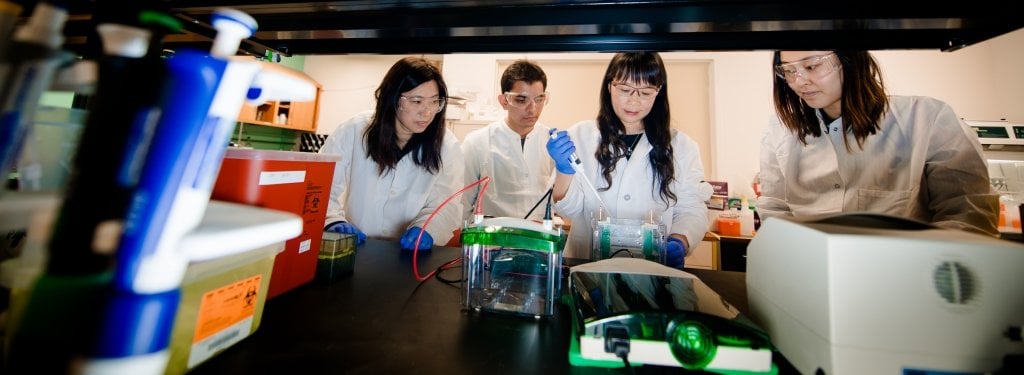Biomedical engineer Feng Zhao is making lab-grown tissues that are just like the real thing—because they are the real thing.
Transcending synthetics, Feng Zhao's new nanoscaffolding created from fibroblast cells is set to revolutionize lab-grown tissues—and save lives.
Our cells aren't solitary. They exist in a vast, complex matrix that serves as the backbone for their duties. As cells proliferate, they use their surroundings to carry out our most basic biological functions, including growth and healing.
In all multicellular organisms—humans included—cells make their own extracellular matrix. When scientists try to grow tissues in the lab, they must provide a scaffold for cells to latch onto as they grow. These lab-grown tissues have proven to be of paramount importance, allowing us to repair and replace almost any part of our bodies.

Typically, researchers construct scaffolds from synthetic materials or natural or human substances. These methods have their pros and cons, but no scaffolds grown in a petri dish have been able to mimic the highly organized structure of the extracellular matrix made by living organisms—until now.
Feng Zhao, assistant professor of biomedical engineering, has developed a way to create a highly aligned scaffold out of fibroblast cells, the same cells that synthesize the extracellular matrix in living beings. Its fibers are 80 nanometers across—much smaller than previous lab-built scaffolds—and are made of the same mix of proteins and sugars found in the body.
"The blend of sugars and proteins mimics the body's biology, meaning it's completely biological. Since it's made of the same building blocks as natural scaffolding, we see a much higher biocompatibility when a lab-grown tissue is introduced into the body."
That agreeability could have enormous implications down the road; higher biocompatibility means fewer cases of organ and tissue rejection after operations. But Zhao's scaffolding not only imitates intricate biological formulas—it also gives cells the organized structure that they need to form specialized tissues.
Cardiac muscles, for example, need to grow in line with one another to be able to carry out their rhythmic contractions in efficient synchrony. Scaffolds of old were far too disorganized to provide a structured framework for their assembly. But when they're given Zhao's highly aligned scaffolding to grow upon, their ultimate structure closely mirrors what scientists would see in situ.
Zhao hopes her nanoscaffold will help make new types of lab-grown tissues and blood vessels possible in the near future.
Those smaller vessels open many vital doors for biomedical engineers, Zhao explains. Implanted tissues often fail to thrive because they don't come with the same built-in network of capillaries that biological tissues have. Nanoscaffolding allows scientists to pre-vascularize tissues before implant, which will keep lab-grown materials alive.
"Coronary artery disease is the leading cause of death in the US, and small-diameter blood vessels are highly demanded by the market. We have been limited in the size of blood vessels we can generate in the lab, but now we have the scaffolding we need to make vessels that are six millimeters and smaller."
Scientific merits aside, Zhao says her research's most important component is very human.
"My long-term goal is to save lives. But we're also meeting a critical market and medical need. This allows us to slow health problems—and keep people healthy."
Michigan Technological University is an R1 public research university founded in 1885 in Houghton, and is home to nearly 7,500 students from more than 60 countries around the world. Consistently ranked among the best universities in the country for return on investment, Michigan's flagship technological university offers more than 120 undergraduate and graduate degree programs in science and technology, engineering, computing, forestry, business, health professions, humanities, mathematics, social sciences, and the arts. The rural campus is situated just miles from Lake Superior in Michigan's Upper Peninsula, offering year-round opportunities for outdoor adventure.




